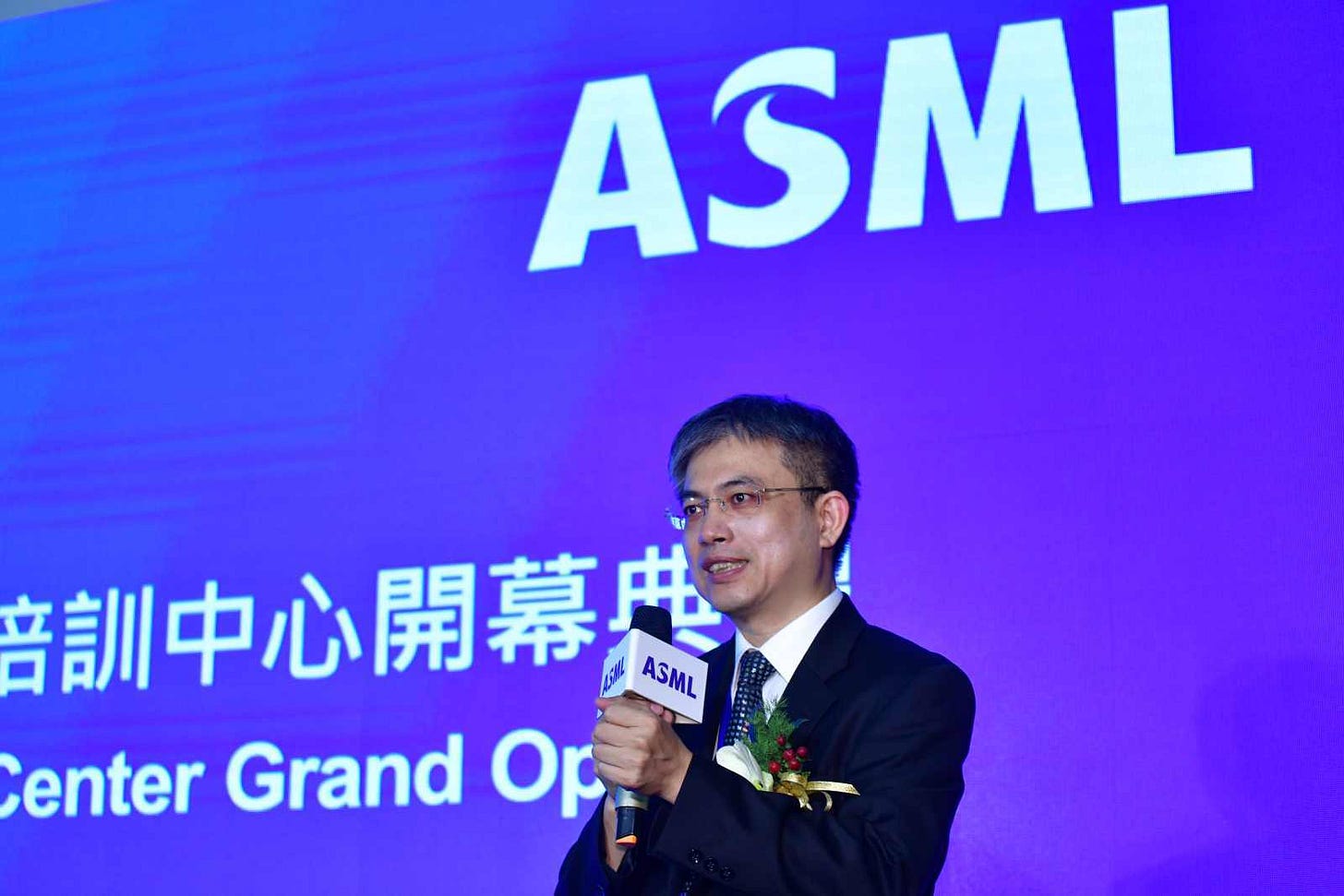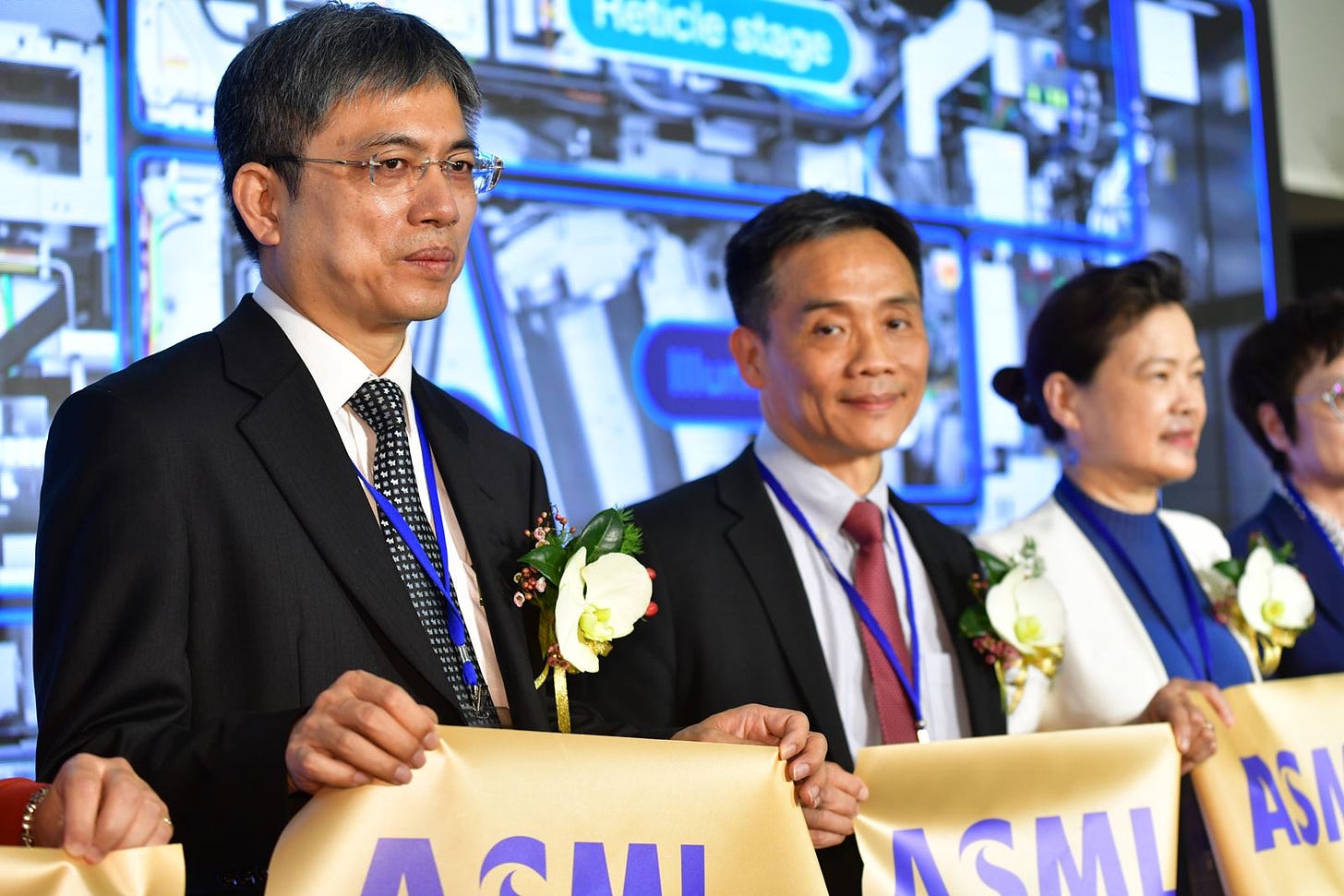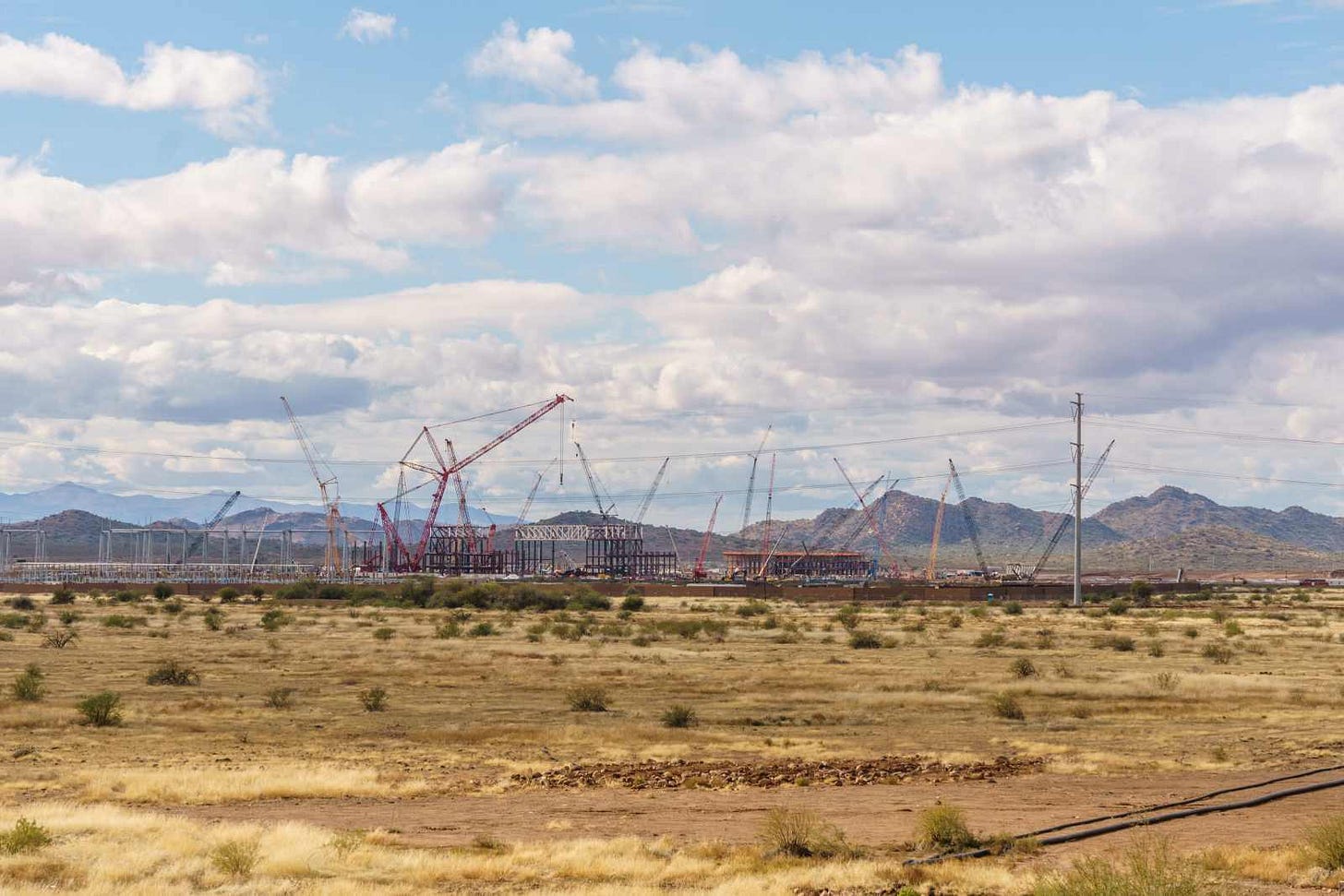The Key Figure Behind TSMC’s U.S. Expansion: TSMC’s Shohei Ohtani, Ying-Lang Wang
Liang-rong Chen
Hello everyone,
The semiconductor industry never has a dull week—it keeps us constantly on our toes.
Just before the deadline for this newsletter, Intel announced that Lip-Bu Tan(陳立武), a 65-year-old semiconductor veteran and former CEO of Cadence Design Systems, will take over as its CEO.
This news got me excited for a moment. Now, two major U.S. semiconductor companies have CEOs who share my surname, Lip-Bu Tan of Intel and Hock Tan(陳福陽) of Broadcom.
However, this is a tricky thing to explain to foreigners because both of them are Malaysian Chinese, and their surname “Tan” is the Teochew pronunciation of “Chen” rather than the Taiwanese “Chen.”
In fact, as early as last year, when Lip-Bu Tan resigned from Intel’s board, a friend from the Silicon Valley semiconductor industry told me that he was preparing to take over as Intel’s CEO. And now, it has become a reality.
As soon as the news broke, many semiconductor veterans were thrilled, and my phone was flooded with Line messages.
Lip-Bu Tan has many connections in Taiwan, making him very different from previous Intel CEOs. During his tenure leading Cadence, the world’s second-largest EDA company, he also developed a strong relationship with TSMC.
As a result, the industry generally expects that with this "Taiwan-savvy" CEO at the helm:
Intel will deepen its collaboration with TSMC.
He will accelerate the separation of Intel’s manufacturing division (after all, he was the one who advocated for the split, which led to his fallout with Pat Gelsinger and subsequent departure from the board).
With these two factors combined, does this mean Intel’s manufacturing division will eventually be sold to TSMC?
That remains to be seen. Lip-Bu Tan’s letter to Intel employees upon taking office still stated his goal to “establish ourselves as a world-class foundry.”
Now, back to this issue’s main topic.
At last week's Presidential Office press conference, TSMC President C.C. Wei’s explanation of the company’s $100 billion U.S. investment continues to stir discussions.

Taking this opportunity, I want to introduce a key figure who will likely be responsible for executing the largest foreign investment in U.S. history over the next few years, TSMC’s Vice President of Operations and CEO of the Arizona fab, Ying-Lang Wang(王英郎).
"A-Lang" is a legend.
No TSMC executive has ever risen through the ranks so quickly while also being the subject of so many dramatic stories among suppliers and customers.
Many have confidently told me that this top "second-generation TSMC engineer" (as opposed to the first-generation engineers from ITRI) is a strong contender for TSMC’s top position.
But at the same time, some have pleaded with me to be cautious with my words—"Don’t get him into trouble."
Here’s what’s in this issue:
On Thursday, March 6, TSMC President C.C. Wei(魏哲家) and Taiwan’s President Lai Ching-te(賴清德) held a joint press conference at the Presidential Office, aiming to clarify concerns over TSMC’s expanding investments in the United States.
A key point in Wei’s remarks was explaining what exactly the "R&D center" in the U.S. would entail. Would it lead to the outflow of TSMC’s advanced technologies and cause Taiwan’s semiconductor industry to hollow out?
Wei clarified that the so-called R&D center is merely a rebranding of production line personnel responsible for process improvements—a team of 1,000 people. The true R&D center, focused on developing 2nm and 1nm process technologies, remains in Taiwan with a workforce of 10,000 people.
At this point, political journalists and the general public might have been confused.
After all, isn’t a wafer fab’s production line supposed to faithfully execute the process recipes developed by the R&D team? Why would production engineers themselves need to do "R&D"?
Wei explained: "The biggest difference between TSMC’s production lines and our competitors' is that once we start production, we continuously push ourselves to improve and innovate. I’ll say it bluntly—our competitors don’t have this capability!"
The person who best embodies this "dual-wielding" model—where production and R&D advance in tandem—is a rising star at TSMC: Ying-Lang Wang, Vice President of Operations and CEO of TSMC Arizona.
At 57 years old, he is TSMC’s first VP from the ’60s generation (born in the 1960s).

Master of Both Production and R&D
Ying-Lang Wang has long overseen TSMC’s fabs in Southern Taiwan Science Park, the center for 5nm and 3nm production—a critical growth driver that helped TSMC pull ahead of Intel and Samsung in recent years.
In April 2023, he was urgently sent to the U.S. to take over the troubled Arizona fab, successfully leading the team to begin mass production of 4nm chips earlier this year.
A formidable leader in fab construction and mass production, Wang is also a research powerhouse, having published over 300 papers and holding nearly 300 patents, rivaling even dedicated R&D professionals.
Wang earned his undergraduate degree in Physics from National Tsing Hua University and a master’s degree in Materials Science from National Sun Yat-sen University. While working as a process engineer at TSMC, he pursued an in-service Ph.D. in Electronics at National Chiao Tung University, making him Taiwan’s first Ph.D. specializing in Chemical Mechanical Planarization (CMP) processes.
A former colleague shared an insight: Most process engineers spend their time on call, handling fab operations and troubleshooting issues. When they have some spare time after paperwork, they might think about process improvements. If they’re exceptionally dedicated, they might write papers or apply for patents—but those cases are rare.
But Wang was different.
In his 30s, when he was still an assistant manager for thin-film processes, despite leading only about 10 people, he handpicked 3~4 top engineers to form an elite team.
Under his leadership, this team was exempt from on-call duties and focused solely on process improvements, publishing papers, and filing patents—essentially functioning as a "mini R&D center" within the production line.
In other words, Wang had already implemented C.C. Wei’s concept of a "production line R&D center" over 20 years ago.
His exceptional management ability became evident at this stage.
By allocating 60% of his team to routine production tasks, he ensured smooth fab operations, while the remaining 40% focused on innovations, achieving far superior results in process optimization and patent filings compared to other departments.
His team frequently won TSMC’s internal quality competitions and even represented TSMC in national productivity contests. “Whenever they competed, they took first place," a former colleague said.
The Critical Role of Process Optimization
But why is there so much room for process improvement in the first place?
A former TSMC process manager explained: When a new process recipe is handed over from R&D to the Mother FAB (TSMC’s pilot production fab), its yield rate is often just 20–30%. The job of process engineers is to modify and refine the process as production ramps up, improving the yield to over 90%.
“Sometimes, the modifications can be as drastic as 20–30% of the original recipe. If R&D chooses the wrong equipment, we might even replace entire toolsets,” he said.
Wang’s prolific publication and patent output also had practical benefits.
A former fab director at TSMC explained: To be promoted to level 36 (Senior Manager and above), candidates must pass a Promotion Review Committee that evaluates managers across different fabs. “Having a strong track record of published research and patents is a major advantage."
Wang’s bold yet highly efficient management style in his early years set the foundation for his future career.
The Ultimate Overachiever
Wang’s astonishing resume is listed on National Sun Yat-sen University’s Outstanding Alumni page:
Youngest person in TSMC history to be promoted to Manager, Director, Fab Director, and Vice President
Five-time winner of the National Invention Award
Recipient of the 41st Ten Outstanding Young Persons Award (alongside table tennis star Chih-Yuan Chuang)
Many people have encountered a "legendary genius" in school—the type of person who scores 100 in calculus while the rest of the class fails.
For semiconductor engineers of the ‘60s and ‘70s generations, that "legendary genius" is Ying-Lang Wang.
"He basically skipped grades all the way to the top," a former colleague said.
At one point, when Wang was being considered for promotion to Senior Manager, the review committee was chaired by former TSMC R&D VP Chiang Shang-yi.
Since Wang’s performance was flawless, Chiang jokingly asked him: "Give us a reason—why should we promote you?"
Wang, who at the time was assisting TSMC’s lawsuit against SMIC, responded: "The American lawyer I worked with told me— 'In all my years as a lawyer, I’ve never seen someone love their company this much.'”
An Advocate for Local Materials and Equipment Suppliers

Another story comes from a supplier who knows him well. Within the industry, Ying-Lang Wang is widely regarded as the TSMC fab director most proactive in adopting domestic materials and equipment.
This is also highlighted in his alumni profile, which credits him for "collaborating with local manufacturers on innovation."
One domestic equipment manufacturer, which had been working closely with Wang’s team to replace American-made tools, had decided to sell the company to a U.S. firm at a high price.
When they visited TSMC in Southern Taiwan Science Park to inform Wang, he immediately lost his temper: "I’ve spent years cultivating you, and now you want to sell? I won’t allow it."
The company’s chairman later told me: "I didn’t dare sell after that."
Looking back, it turned out to be the right decision.
The equipment this company co-developed with TSMC played a crucial role in maintaining the cleanliness of EUV processes, helping TSMC take the lead in 5nm and pull ahead of Samsung and Intel.
10-Second Tech Recap
TSMC’s "dual-wielding" R&D model – Its production lines not only mass-produce but also actively refine processes. This is the key competitive advantage that C.C. Wei highlighted at the Presidential Office press conference.
The best example of this "dual-wielding" model is Ying-Lang Wang, TSMC’s Vice President of Operations and CEO of TSMC Arizona.
Excelling in both production and R&D, coupled with his unique management style, Ying-Lang Wang rose rapidly through the ranks, becoming the youngest VP in TSMC’s history.
Read more here:
Exclusive|How Taiwan Glass Became Nvidia’s Unlikely Savior for GB200
TSMC Taking Over Intel’s Manufacturing? A High-Profile Dinner and an Insider Clues





Learnt a lot about this guy. Thanks